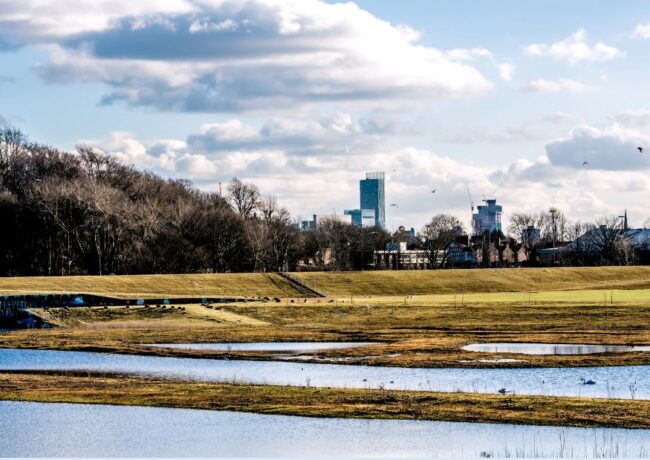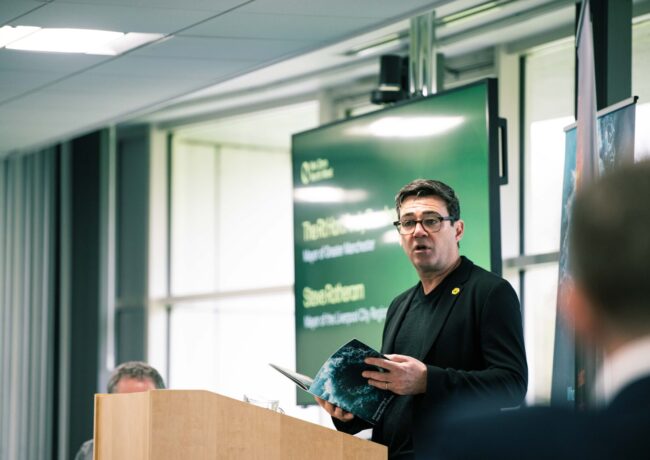Urban wetland and flood defence scheme completes in Salford
A £10m project to protect 2,000 of Salford’s homes from flooding, alongside the creation of a 12-acre wetland nature reserve, has been completed.
The 69-acre project sits in a loop of the River Irwell and will protect properties along the river by holding up to 650 million litres of water during a flood event. It follows on from an earlier flood defence scheme completed at Littleton Road in 2005.
An inlet at the South West corner of the site will allow the controlled spill of water into the basin when the river’s level is high. Water is then stored in the basin and released by two outlet pipes once the river’s water level has dropped.
The flood defence scheme is estimated to protect more than 200 acres of development along the river, and will provide more opportunities to develop land in the river’s corridor.
Alongside the flood defences, the project also includes a wetland reserve, nearly two miles of public footpaths along the periphery, and around 25 acres of wildflower habitat.
There are also multi-use sports pitches at the southern end of the site, and dependent on weather, it is hoped the area will open to the public in the spring.
The three-year project has been delivered by a joint venture of Galliford Try and Black & Veatch. Backed by the Environment Agency, it has been funded by £9.1m from the Government and £1.2m from Salford City Council.
Derek Antrobus, lead member for planning and sustainable development at Salford City Council said: “The new flood basin realises a long-term ambition of the city council to reduce the risk for local communities.
“The council is delighted that it will also provide an excellent amenity and we have invested in the bridge from Kersal Dale so the site is integrated into the walking and cycling route along the Irwell Valley.”





This is a fantastic resource to have so close to the city centre, and what’s particularly good is the integration between functionality as a flood basin, as a wildlife resource (WWT involvement), and as public recreation. It will be necessary to keep on top of the invasive plant species Himalayan balsam, Japanese knotweed and giant hogweed that plague the Irwell basin although I can’t see this happening.
What people should remember, though, is that building flood defences at a cost of £millions downstream from a river’s watershed is like putting plaster over a wound rather than preventing the wound in the first place. The Irwell watershed is almost completely deforested; upland peat bogs that would act like a sponge have been drained and burned for sheep farming/intensive grouse moors, neither of which make any significant money and give very little employment opportunity. Burning and draining the uplands releases vast amounts of carbon and in general the denuded uplands are terrible for biodiversity. The sorry state of our barren upland landscape is one reason these floods happen in the first place. Time to invest in the watershed and start restoring it.
To finish on a positive, we’ve been waiting too long for this to open and I can’t wait to visit.
By Good scheme but..